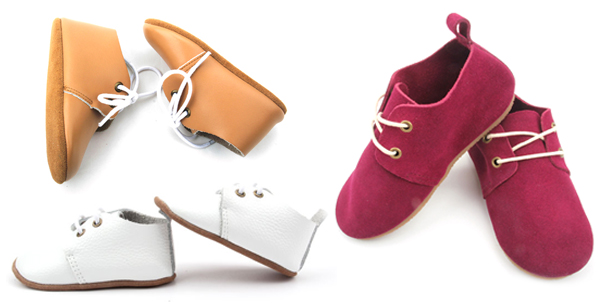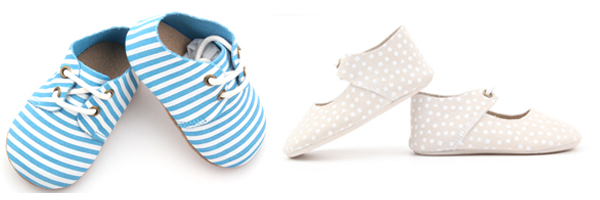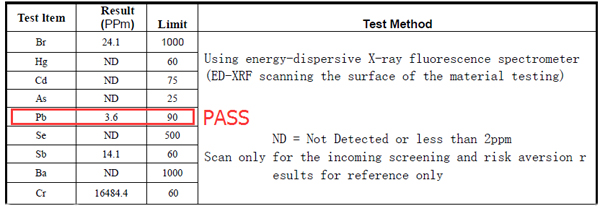Adidas and Nike, the rise of these two brands in the same historical context, gave too much inspiration to future generations. The story of Adidas mainly took place in Europe. After several innovations from the 50s to the 70s, a brand that dominated the market was born. Nike’s unique success story was staged in the United States. It began in the 1970s, grew up in the 1980s, and took off in the 90s. There are too many stories in the history of the development of these two companies.
Establishing Adi's authority with large-scale events
In 1928, when the founder of the company, Addie Dasler, began sewing the first pair of sports shoes for the athletes who participated in the Amsterdam Olympics, the history of Adidas was closely linked with the Olympic Games. At the Athens Olympics, Adidas provided equipment for 26 of all 28 sports. In fact, it is the international sports competition of the Olympic Games that provides Adidas with the best platform for displaying product quality. It is this marketing feature that has made Adidas today.
Adi Dassler and his successors have only one belief: to provide athletes with the best products, so that their performance is better. And an international venue like the Olympic Games is undoubtedly the best platform for testing product quality. In the world, Adidas's marketing strategy is mainly to establish close links with world-class sports events. Although adidas owns a group of famous athletes as spokespersons, the company's marketing focus is more biased toward large-scale global sports competitions, sports organizations and teams such as the Olympic Games, European football championships and World Cup football matches. Adidas links itself with the most exciting events. This is different from Nike, who prides itself on sponsoring individual athletes. The latter places greater hope on the success of athletes and the performance of the players both inside and outside the stadium. In addition to the World Championships, Adidas also sponsors national and regional teams around the world. The sponsoring teams include national football teams from Germany, Spain and France; football clubs such as AC Milan and Real Madrid; New York Yankees baseball team and San Francisco 49 football team. The team is the center and spiritual pursuit of the lives of many fans. This has created a unique opportunity for the team sponsors to establish contact with customers and provide them with brand promotion.
Relying on this set of marketing models, Adidas was one of the best in the 1960s and 1970s.
However, in the 1970s, Adidas did not realize that the civilian movement had become a trend, or focused on professional sports shoes. Due to the failure of sales expectations and underestimation of market competition status, Adidas's status has been challenged and was eventually overtaken by Nike in the late 1970s.
The vigor of star worship
Nike originated in 1962 and was first founded by Phil Knight. At that time, it was named "Blue Ribbon Sports." It was officially renamed Nike in the 1970s. Since then, Nike has gradually changed from a product-oriented company to a market-oriented company. It operates globally, designing high-tech and high-quality products within the company, producing in low-cost countries, and successfully establishing a brand as a symbol of youth culture through marketing. Nike's unique resources include patented products and trademarks, brand reputation, corporate culture and the company's unique human assets.
In the production process, since the 1970s, Nike has outsourced manufacturing to many Asian countries. Outsourcing gave Nike a cheap workforce and received a lot of discounts from suppliers. Moreover, outsourcing allows customers to get new products from the market faster and reduce the risk of capital investment. On the other hand, in terms of sales, this “futures†ordering plan allows retailers to pre-determine transportation guarantees 5-6 months in advance, guaranteeing that 90% of orders will arrive at a certain time at a certain price. This strategy succeeded in minimizing inventory and shortening inventory turnover.
In the 1980s, professional athletes were worshipped like heroes, so Nike invested a lot of money, invited successful, attractive and well-known athletes to speak for the product and adopt a pyramid promotion strategy. That is, from the top players of the spire to the national team, to the NBA league provincial team, until the packaging to the ordinary youth basketball activities, including the four elements of the entire sporting goods market. The number of top athletes is the least, but it has strong radiation power.
In 1984, Nike signed a five-year contract with basketball player Michael Jordan. The conditions for Jordan also include giving Nike stocks and unprecedented courtesy - using Jordan's name on Nike sports shoes. Jordan’s total value is as much as $1 million a year. This price is five times that of Adidas or Converse. At that time, the outside world always believed that Nike’s move was completely crazy. The result proves that this is a "winning" deal, thanks in large part to Jordan, who has exceeded many people's expectations. This also fully validates Nike's unique vision. Nike's strategy of contracting new people worldwide with potential is still in use today. Jordan's impact on Nike is huge. Jordan's body has gathered vitality, prestige, superb level of competition and exciting sportsmanship, which allows Nike products to step out of the circle of running shoes. He has done a great job in the basketball sport that has just begun to prevail in the United States. article. Almost overnight, Nike became the leading product of high-end basketball shoes. With the widespread spread of the "JUSTDOIT" genius slogan, Nike took advantage of its advantage in the basketball market in 1990 to surpass Adidas as the world's largest supplier of sports products.
Market strategies will change with the preferences of consumers. The rapid reaction to market changes is the magic weapon for Nike to maintain its core competitiveness. Nike is not shy about learning and emulating Adidas in the course of business development. Nike took the Germans' operating methods to a large extent and moved them forward. This is a short cut that justified the company, which has enabled the company to develop rapidly. However, Nike did not follow the Germans in the design of the product itself. Nike's independently developed products are worth learning from Adidas.
The world of football
All are committed to sports brands, are the industry leader, in the competition for resources, it is inevitable that the collision. Adidas traditional advantage areas are football and track and field. Football is the most attractive sport in the world today and its market value is inestimable. As the industry's top Nike will not stand idly by, Nike's annual sales of football products reached about one billion US dollars, while the Premier League team Manchester United, Arsenal also signed a cooperation agreement with Nike. In order to surpass its rivals, Adidas must of course multiply its operations in its traditional strengths, defend its own stronghold, and expand outward.
Adidas has always dominated FIFA's top business partners and Nike simply can't get involved. The IOC’s traditional forces also support Adidas. There are these two major international sports management agencies in hand, the international sporting goods market has emerged this strange boss hit guerrillas, the old second stable as an official representative of the situation. In order to launch an impact on Adidas, Nike has invested 100 million euros in the World Cup in Japan and South Korea. During the World Cup in Germany, six teams appeared on the court wearing Adidas' famous "Clover" trademark. At the same time, Nike also signed sponsorship contracts with eight teams.
In the Chinese market, the competition between the two companies is quite fierce. For Adidas and Nike, it is necessary to increase investment in the most influential football. This competition has allowed Nike to choose the Super League in an unexpected and reasonable manner. Since Adidas established a cooperative relationship with the Chinese Football Association from the 1980s onwards, it is a supplier of men's and women's national teams at all levels. Therefore, Nike dwarfs the competition in the "China Team" project. For Nike, to use Chinese football to ensure and expand its position in the Chinese market, only the league is the breakthrough. According to industry analysts, even though the China Super League is now down compared to 10 years ago, football is a key sports event, and it is still a sports sport company must not ignore. Lu Feng, general manager of Super League, said that the most important thing for Chinese football sponsors is an audience of 15,000 people per day, and a total of 144 million television viewers throughout the year.
In fact, Nike has long been eyeing the broad prospects of the Chinese football market. In 2004, they once proposed that the equipment manufacturers who competed for the "China Team", although they did not succeed in the end, made Adidas pay a huge price to retain the position of the equipment manufacturers. That year, Nike took advantage of Adidas's inability to meet certain requirements of the Chinese Super League and became one of the sponsors of the China Super League. Through cooperation, Nike has also been promoted from the general sponsor to the main sponsor, and its position in the Chinese football market has also significantly improved.
Basketball Game
In the basketball market, although Adidas had already sold basketball shoes on the global market as early as the 1930s, Adidas was slightly weaker than Nike. Since Nike contracted Jordan, Nike's position in the global basketball market has been rock solid. As the NBA is one of the most popular sporting events in the United States, Nike is obviously the host with more advantages than Adidas. In particular, in July 2003, Nike took a 305 million US dollars wholly-owned acquisition of sports shoe manufacturer Converse, and pulled down the distance with competitors.
And rival Adidas must not allow Nike to enjoy the world in basketball. In 2004, Adidas became the official designated sponsor of the NBA League with a price of US$400 million for 11 years, and spent Euro 3.1 billion to acquire basketball supplies expert Reebok, relegating Reebok’s local American brand. With the addition of Reebok, Adidas is even more powerful in the fight with Nike's North American market. Although, in the United States market share, Reebok can not be compared with Nike, Reebok has the official shirt sponsorship contract of North American four major sports leagues (baseball MLB, football NFL, NBA and hockey NFL). Reebok has been providing official basketball and other basketball supplies to the NBA since 2001. Reebok's joining may help Adidas achieve breakthroughs in Nike's basketball field. Currently, Reebok and NBA stars such as Yao Ming and Iverson have contracts. It can be said that it is a good opportunity. Through the acquisition, Adidas’s share of the US sports shoe market has increased.
Competition for the resources of the Olympic Games
The fight between the two in the Olympic Games has a long history. Take the Beijing Olympic Games as an example. As the world's second largest consumer goods market for sporting goods, China has become a contestable spot for major brands in the world. Prior to this, Nike took a lead in advancing the adidas that had been working in China for many years with its high popularity among young people.
To this end, after Adidas qualified as a sponsor of the Beijing Olympic Games in 2006, he decided to use the Beijing Olympic Games to surpass Nike’s plans. Adidas paid about a record 80 million U.S. dollars in order to give the company the opportunity to display the adidas logo when all the athletes are on the podium. Adidas also provided clothing for more than 600,000 Chinese delegations, Olympic organizers and volunteers. The viewers watching the Olympic TV programs reached 4 billion people. Therefore, this move is enough to make Adidas's exposure exceed Nike's, resulting in unexpected brand influence.
However, Nike, proud of his alternative image, played a guerrilla warfare and quietly signed sponsorship agreements with various sports teams in China, signing agreements with 22 of China's 28 sports teams. Provide their game clothing and sneakers. The data shows that Nike sponsored the team more than the Adidas, Li Ning and other four sports goods company's total number of sponsorship.
This intricate sponsorship and competition allowed viewers to see a rather dramatic scene at the Beijing Olympics: a Chinese athlete wearing Nike's clothing to participate in the competition, but once on the podium, he must replace Adidas's clothing. What makes Adidas more troublesome is Nike's star strategy. Yao Ming, Liu Xiang, Yi Jianlian and other Chinese most popular athletes all wear Nike's costumes.
However, despite the strong impact of Nike, Adidas announced during the Beijing Olympic Games, with 22% market share beyond the old rival Nike's 21%, becoming the first brand in China's sportswear market. However, this statement has not been recognized by Nike. Nike China still claims to be the most popular sports brand in the Chinese market.
According to annual reports released by Adidas and Nike earlier this year, the crazy marketing of the two at the Beijing Olympic Games did indeed help them achieve strong growth. However, both Adidas and Nike overestimated the Olympic Games' consumption of Chinese consumers. Power, causing a lot of inventory backlog. Today, Adidas and Nike have taken corresponding measures to reduce inventory pressure in the country. This has also given them a wake-up call. Blind market expansion will often backfire.
Channel layout is inseparable
In terms of channel and terminal sales, Adidas and Nike can be said to have different levels of success. Taken in the Chinese market, Adidas and Nike have all given up their high profile, lowered their identities from the channels, and increased the construction of strong media and sales outlets as well as promotion of the terminal image. According to the successful experience of the sporting goods industry, excellent brands and products must first obtain the best product display effect in an excellent terminal store, so as to win market initiative and consumer confidence. However, whoever has the opportunity to enter a good store or get the best store location depends on the brand's influence and operational strength. In terms of specific operations, the two sides basically rely on chain stores. In this regard, Adidas and Nike have a hard time determining the outcome.
Adidas and Nike, the competition between the two major international sports brands will continue to continue as usual. Although Nike continues to surpass Adidas in various market regions in the world, it is not easy to completely defeat Adidas. Because Adidas has a deep relationship with the global sports and sports industry economy, it has an unforgettable brand image in the global consumer and sports field, and it is a spiritual icon in the field of sporting goods with Nike. It should be said that the competition between them is more like a marathon race. There is always a kind of mutual strength between each other. Regardless of the final outcome, the process is the most important, and their brand story is still played in the wonderful world.
Baby Oxford Shoes started popular from 2015, it is a new fashion baby shoes design after moccasins shoes.

Most baby oxford shoes we produced are made by 100% of quality genuine cow leather and suede leather, in variety colors.
For baby oxford shoes sizes in 0-6month, 6-12month, 12-18month, 18-24month, we use soft leather sole, and for larger sizes for kids beyond 2 years old, we usually use hard rubber sole.

Customized patterns on baby oxford shoes make them look fancy and cute, you own patterns & designs will be protected and not allowed to share with others.

Moreover, your OEM orders are welcomed, our factory provide logo printing and packing customizing service for baby oxford shoes as well.
Besides, all leather we used for baby oxford shoes are following the requirement of US CPSIA Policy, pass CUSTOMS TEST, Pb element no higher than 90 ppm, safe and unharmful, eco-friendly.

We are trying our best to make best baby oxford shoes, and help babies grow up well.
Baby Oxford Shoes
Baby Oxford Shoes, Cute Fancy Baby Shoes, Genuine Leather Oxford Shoes, New Designs Baby Oxford Shoes, Soft Oxford Shoes Baby
Shenzhen Baby Happy Industrial Co.,LTD , http://www.babyshoes.cc